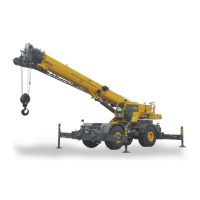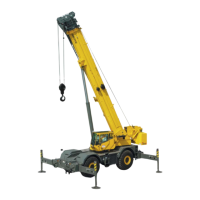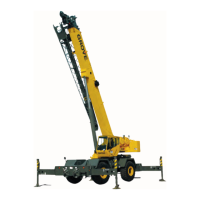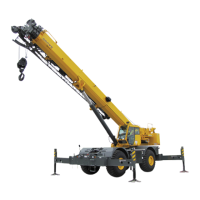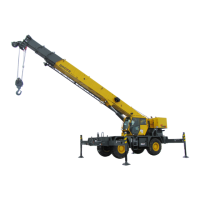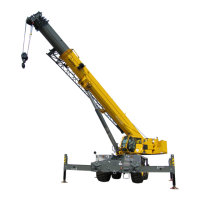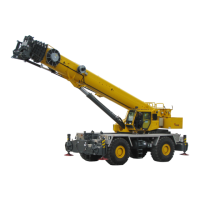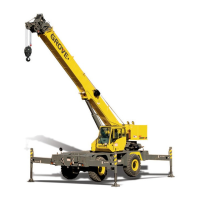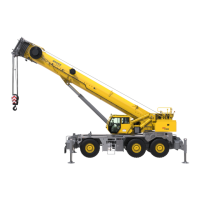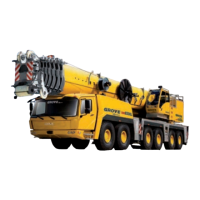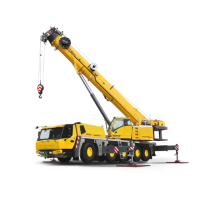4-9
Published 9-04-2014, Control # 422-08
RT765E-2 SERVICE MANUAL BOOM
56. Slide the telescope cylinder assembly out the rear of the
fly until access to the wear pad holders on each side of
the upper telescope cylinder support foot is obtained.
Remove the two bolts and hardened washers securing
each holder and remove the holders.
NOTE: The telescope cylinder assembly weighs
approximately 3733 lb (1694 kg).
57. If necessary, remove the two screws securing the wear
pad to each holder and remove the wear pad.
58. Remove the capscrews and washers securing the
extend cable keeper plate to the rear of the fly. Remove
the keeper plate and remove the four extend cable ends
from the slots in the fly.
59. Continue to slide the telescope cylinder assembly out of
the fly section. Lowering the rear of the fly section and
raising the rod end of the cylinders will aid in removal.
60. Remove the retract cable lug ends from the slot on each
side of the lower telescope cylinder mount.
61. At each retract cable sheave mount, remove the grease
fitting from the shaft. Remove the capscrews and
washers securing the shaft and remove the shaft,
sheave, and two thrust washers from each mount.
Remove the retract cable from each mount.
62. Remove the capscrews and washers securing the upper
telescope cylinder support to the lower telescope
cylinder mount. Remove the cylinder support from the
upper cylinder.
63. If necessary, remove the flat headed screws securing
each wear pad to the cylinder support and remove the
wear pads.
NOTE: The upper telescope cylinder weighs
approximately 1667 lb (756 kg) and the lower
telescope cylinder weighs approximately 2066 lb
(937 kg).
64. Using an adequate lifting device, remove the upper
cylinder from the lower cylinder.
65. On the front of the fly section, remove the nuts and a
washer from the end of each retract cable and remove
the retract cables from the fly section.
66. Remove the capscrews and washers securing the guide
block to the bracket on the bottom front of the fly section.
67. Remove the two flat headed screws securing the rear
bottom wear pad on the fly section and remove the wear
pad.
68. If necessary, remove both grease fittings, connectors,
and grease lines from the rear of the fly section.
69. On the lower telescope cylinder mount, remove the
capscrews and washers securing plates that secure the
shaft. Remove the plates, shaft, and mount from the
lower telescope cylinder.
70. If necessary, remove four flat headed screws securing
the skid pad to the cylinder mount and remove the skid
pad.
71. Remove the capscrews and washers securing the
extend cable retainer plate to the front of the upper
telescope cylinder. Remove the retainer plate.
72. Remove the four extend cables from the sheave
assembly.
73. Remove the grease fitting from the shaft. Remove the
capscrews and washers securing each plate to the
sheave mounting assembly. Remove the sheave shaft
and the sheave assembly from the mounting assembly.
74. Remove the capscrews and washers securing the
sheave mounting assembly to the support foot.
75. Remove the capscrews and washers securing the
sheave mounting assembly and the support foot to the
front of the telescope cylinder. Remove the sheave
mounting assembly and the support foot.
76. If necessary, remove the screws securing each wear
pad to the support foot and remove the wear pads.
77. If removal of the boom nose sheaves are required, refer
to the following section.
78. Refer to Boom Extension and Retraction Cable, page 4-
16 in this section for cable inspection.
Boom Nose Sheaves
Removal
1. Remove the clip pins from the cable retainer pins and
remove the cable retainer pins from the upper and lower
part of the boom nose.
2. Remove the capscrew, washer, and nut securing the
upper boom nose sheave shaft. Remove the collar.
NOTE: The boom nose sheave shafts weigh
approximately 138 lb (63 kg) each. The boom nose
sheaves weigh approximately 28 lb (13 kg) apiece.
3. Carefully pull the upper boom nose sheave shaft from
the boom nose, removing the spacers, shims, and boom
nose sheaves. Note location of each.
WARNING
Ensure the telescope cylinders are securely blocked and
some means used to hold them together to prevent any
accidental movement. Severe injury can occur if the
cylinders drop.
Reference Only

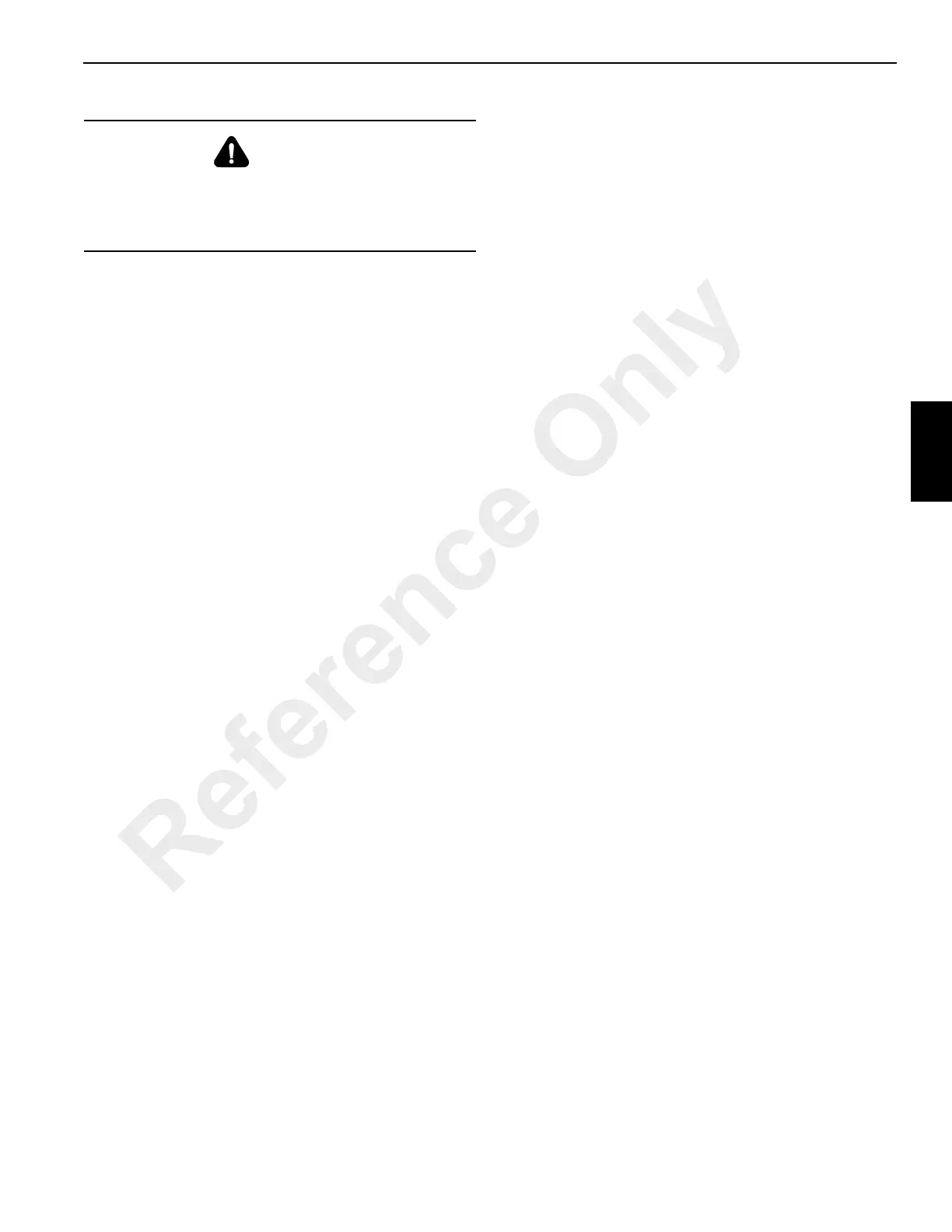